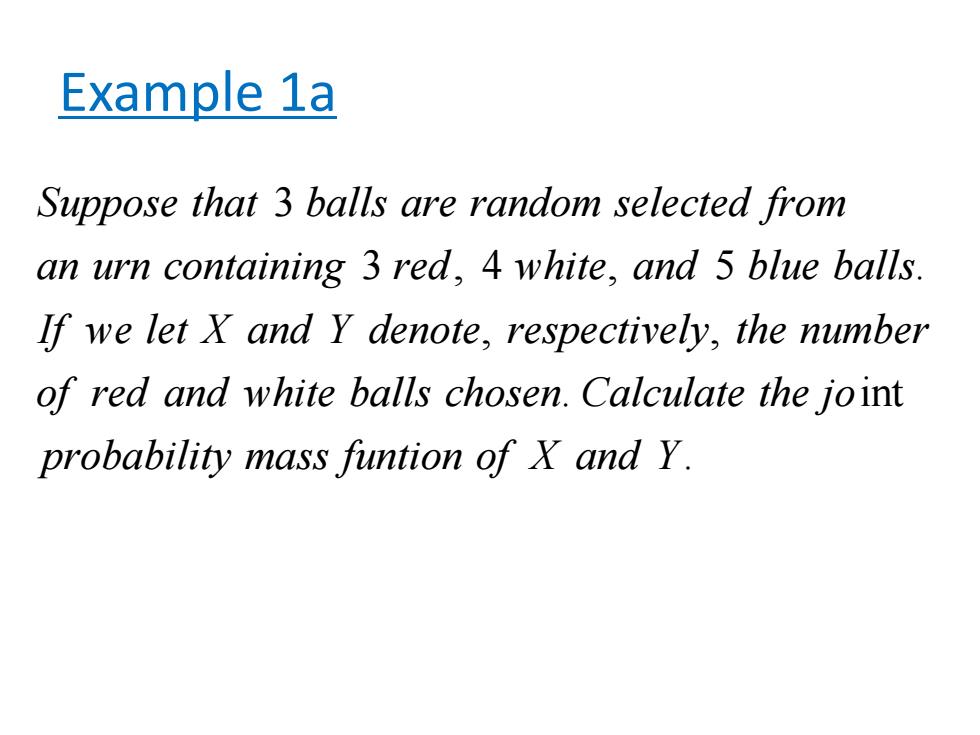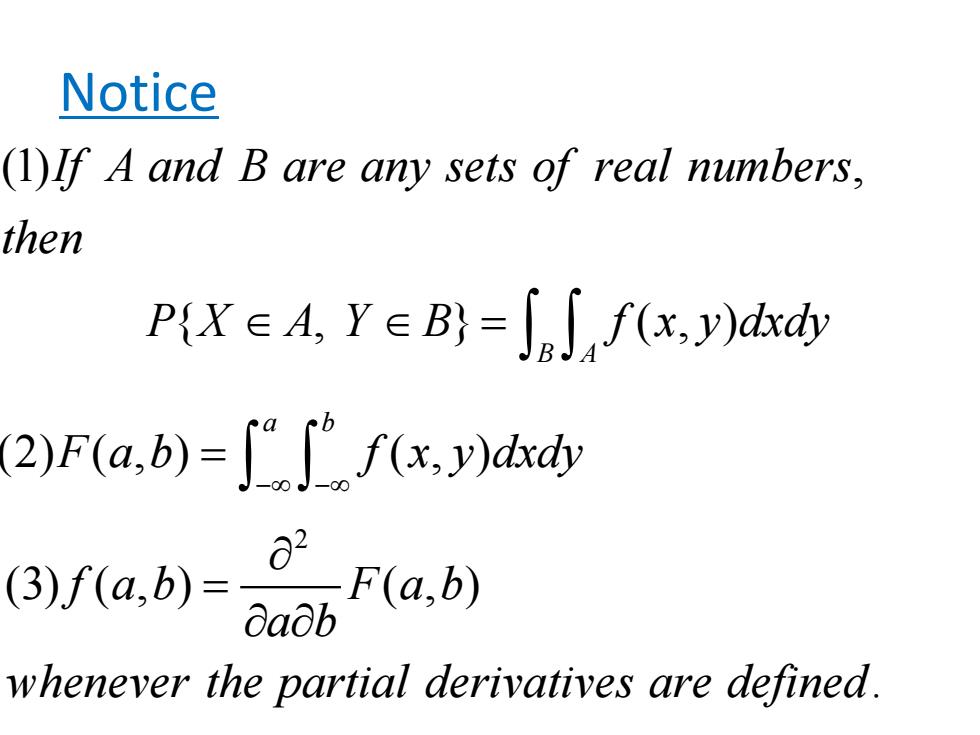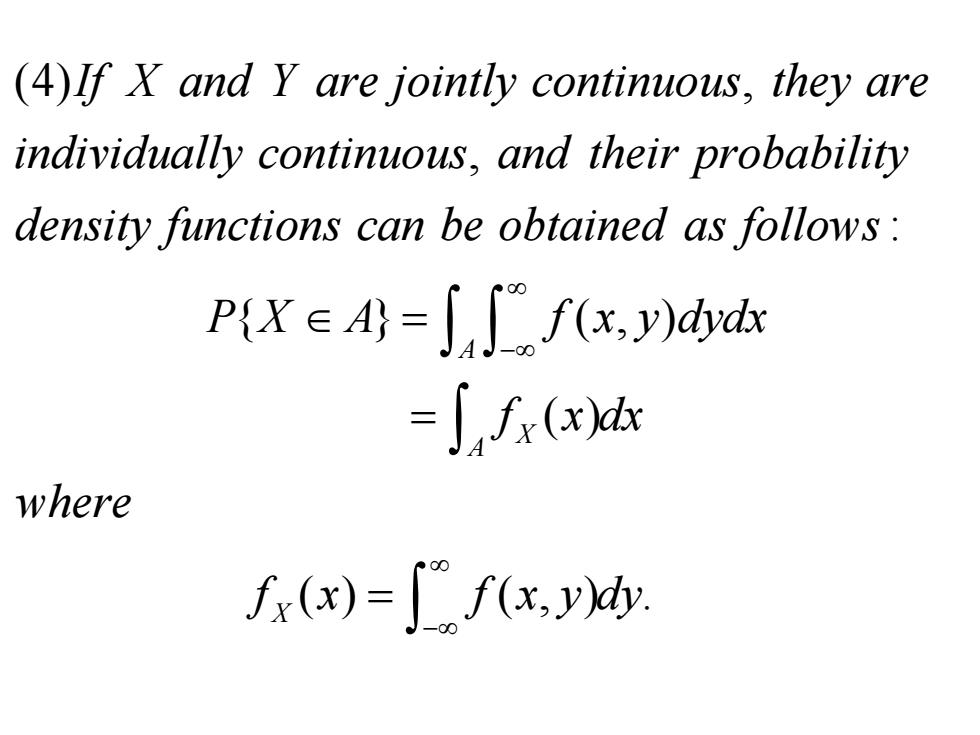
Example 1a Suppose that 3 balls are random selected from an urn containing 3 red,4 white,and 5 blue balls. If we let X and Y denote,respectively,the number of red and white balls chosen.Calculate the joint probability mass funtion of X and Y
Example 1a 3 3 , 4 , 5 . , , . int Suppose that balls are random selected from an urn containing red white and blue balls If we let X and Y denote respectively the number of red and white balls chosen Calculate the jo probability mass funtion of X and Y

We say that X and Y are jointly continuous if there exists a funtion f(x,y)defined for all real x and y,having the property that for every set C of pairs of real numbers P((X,Y)EC)=f(x,y)dxdy (X,Y)∈C The function f(x,y)is called the joint probability density function of X and y
( , ) , {( , ) } ( , ) We say that X and Y are if there exists a funtion f x y defined for all real x and y having the property that for every set C of pairs of re jointly c al numbers P XY C f ontinuo xy x u d s ∈ = d ( ,) ( , ) . XY C joint probability densit y The fun y func ction f tio x y is called t n he of X and Y ∈ ∫∫

Notice (1)If A and B are any sets of real numbers, then P{X∈A,Y∈B}=JeJ,f(x,y)dd (2)F(a,b)=f(x,y)dxdy (3)f(a,b)= _F(a.b) Eadb whenever the partial derivatives are defined
Notice (2) ( , ) ( , ) a b F a b f x y dxdy −∞ −∞ = ∫ ∫ 2 (3) ( , ) ( , ) . f ab F ab a b whenever the partial derivatives are defined ∂ = ∂ ∂ (1) , { , } ( , ) B A If A and B are any sets of real numbers then P X A Y B f x y dxdy ∈ ∈= ∫ ∫

(4)If X and Y are jointly continuous,they are individually continuous,and their probability density functions can be obtained as follows: PXeA=∫Jfx,y)dd =了Jfr(xah where fx(x)=f(x.yrdy
(4) , , : { } (, ) A If X and Y are jointly continuous they are individually continuous and their probability density functions can be obtained as follows P X A f x y dydx ∞ −∞ ∈ = ∫ ∫ () () (, ) . X A X f x dx where f x f x y dy ∞ −∞ = = ∫ ∫